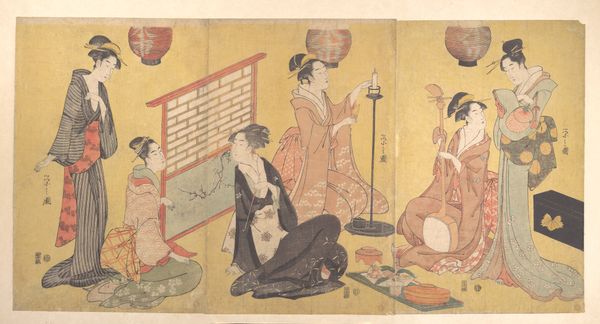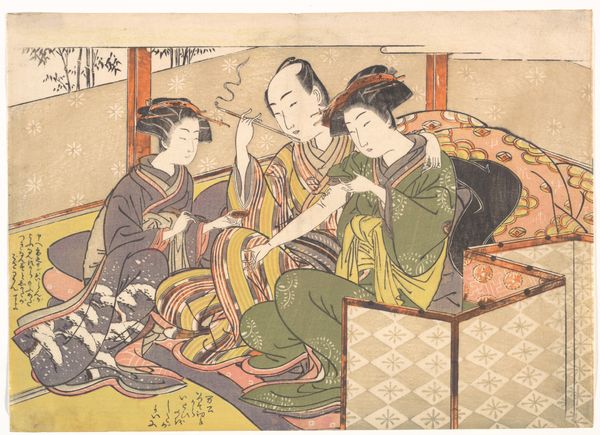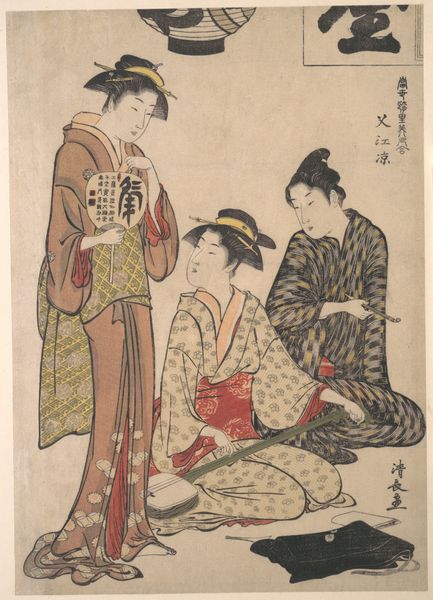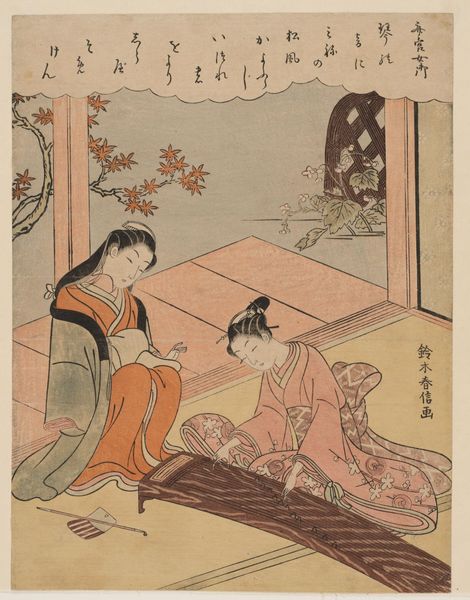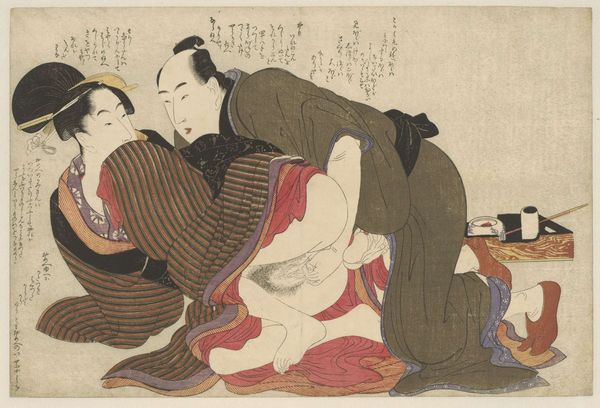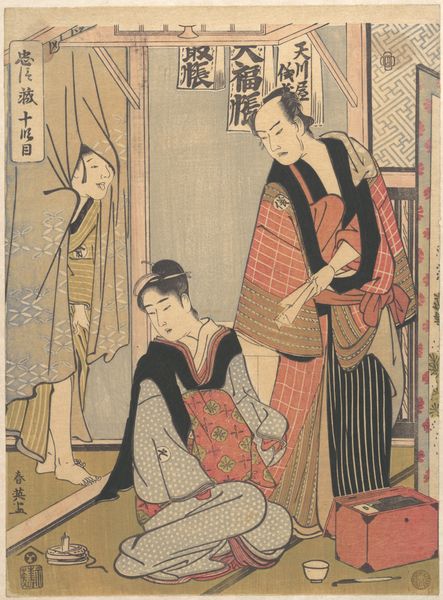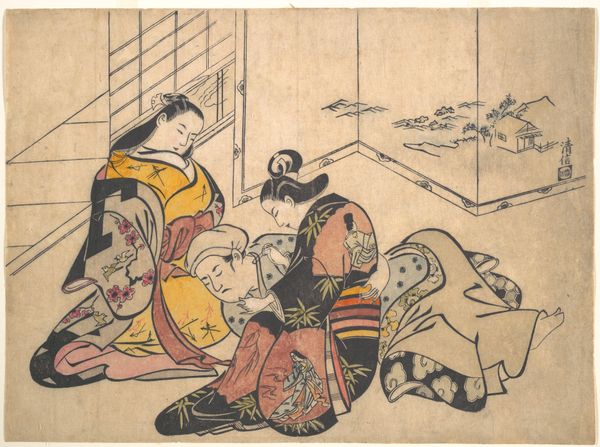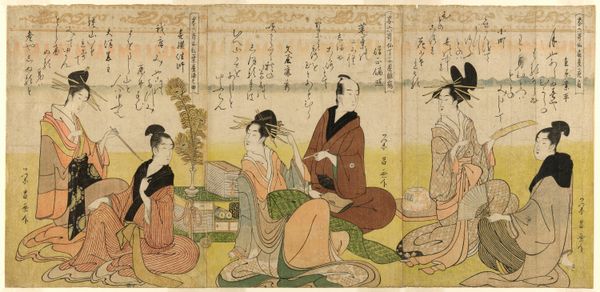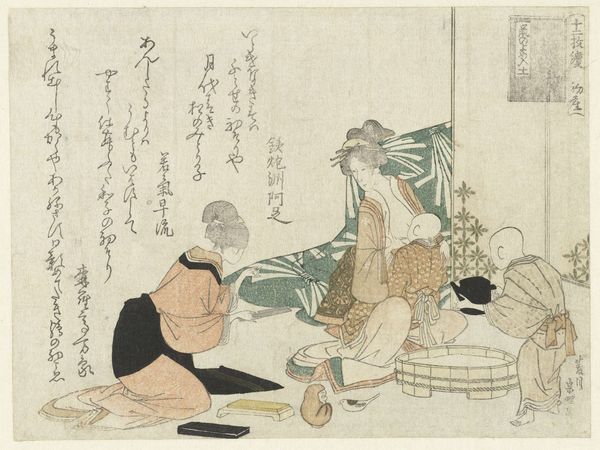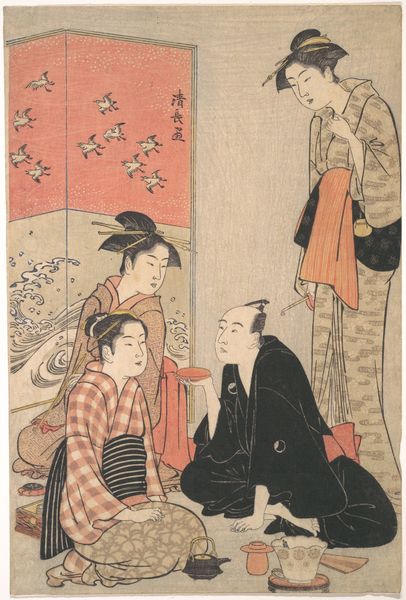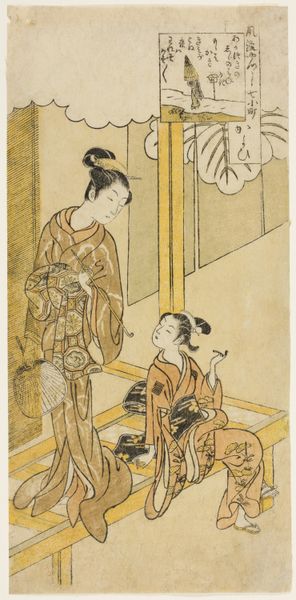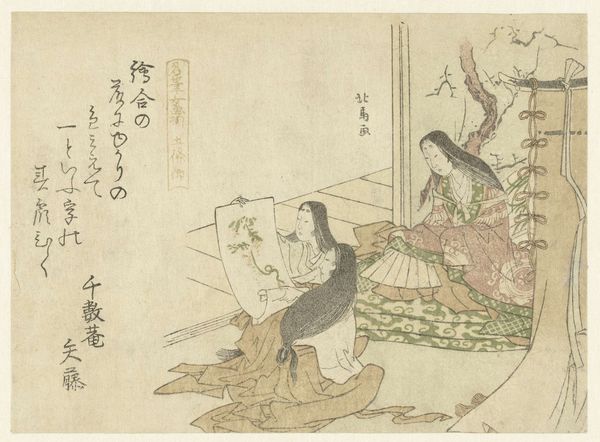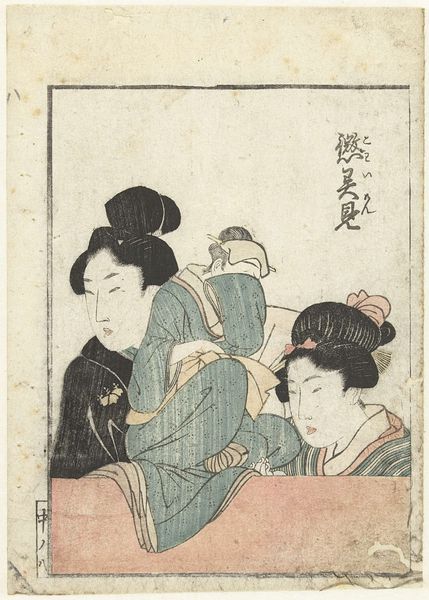
#
portrait
# print
#
asian-art
#
sketch book
#
ukiyo-e
#
figuration
#
intimism
#
genre-painting
Dimensions: H. 7 5/16 in. (18.6 cm); W. 10 3/16 in. (25.9 cm)
Copyright: Public Domain
Curator: "The Art of Conversation," a print created between 1725 and 1770 by Suzuki Harunobu, invites us into an intimate setting. The medium itself, the woodblock print, contributes to its delicate aesthetic. Editor: Immediately, I'm struck by how subdued it is. Almost hushed. The palette is so muted, as though the scene is being viewed through a screen of pale twilight, making the figures the core. Curator: Indeed. Notice how Harunobu uses flattened perspective, a key element in ukiyo-e prints. The patterned screens in the background establish the space but don't compete with the figures, highlighting the semiotics of domestic Japanese settings. Editor: It’s interesting, isn’t it, how he frames them? The vertical stripes beside him draw the eye, yet the actual focus lands on the subtle curve of the woman's back as she reclines with her pipe, a simple tool, as it seems that time is unimportant in this setting. She feels so natural, you can just get a peek of everyday life from that pose. Curator: And note the precise articulation of line and the subtle gradation of color. It speaks to a mastery of technique. Harunobu's innovation with color printing allowed for the nuance and subtlety we see here. The details such as their kimonos and tea set establish material culture markers of the time. Editor: The tea set! Right there at the center between the pair and yet it feels as though their attention is somewhere beyond this world. Maybe it is not that much of a ‘Conversation’ after all. It might be more about this gentle co-existence or, if not, just mutual thoughts. There’s a wistful air to the scene, isn't it? Curator: Perhaps that wistfulness stems from the awareness of its being part of a long and evolving formal and iconographic tradition of portraying everyday life, and using a variety of strategies to achieve those ends. The title in English and its content could have an opposite message: both are communicating by using signs which meaning cannot be deciphered, or by being still. Editor: It certainly leaves me with a lingering sense of quiet reflection, almost as though the very air in the room is still and peaceful. Curator: Precisely. And within its quietude, we can analyze an intricate system of lines and color, providing invaluable data.
Comments
No comments
Be the first to comment and join the conversation on the ultimate creative platform.
